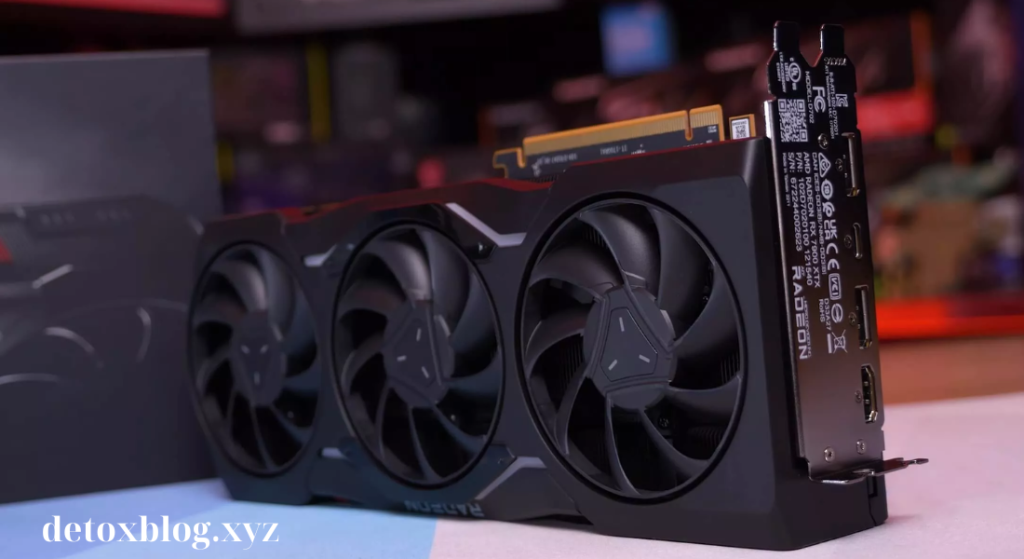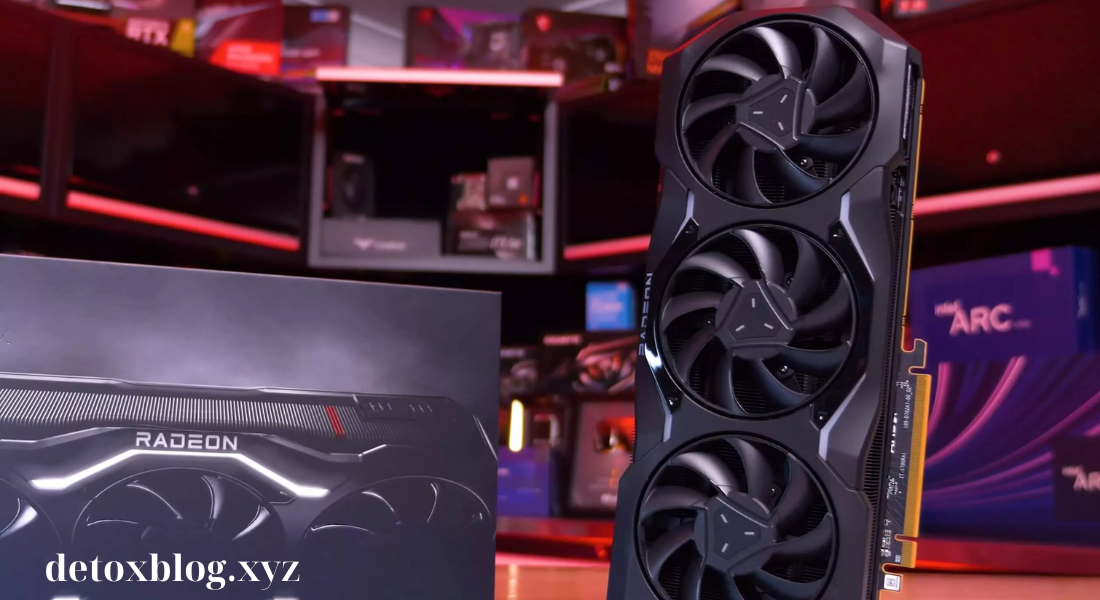AMD has entered the high-performance GPU race with the RX 7900 XTX, a graphics card designed to deliver exceptional gaming and creative performance. Packed with cutting-edge specs and enhanced by AMD’s RDNA 3 architecture, the RX 7900 XTX promises a competitive edge in both gaming and content creation. But how does it truly measure up, and what does this card bring to the table? In this article, we’ll break down the RX 7900 XTX specs and performance, examining what makes it stand out and how it fares in real-world scenarios.
1. Overview of RX 7900 XTX Specs and Performance
The RX 7900 XTX specs and performance reveal AMD’s commitment to offering a powerful alternative to high-end NVIDIA GPUs. With enhanced efficiency, higher bandwidth, and RDNA 3 architecture, this card promises excellent speed and graphical fidelity. Here’s a summary of its standout features:
- Graphics Architecture: Built on AMD’s RDNA 3 architecture, the RX 7900 XTX features improved power efficiency and faster processing speeds.
- Compute Units and Stream Processors: Equipped with 96 compute units and 6,144 stream processors, this GPU is designed for parallel processing, offering fast performance even in demanding games and applications.
- Memory Bandwidth: With 24 GB of GDDR6 memory and a 384-bit memory bus, the RX 7900 XTX achieves up to 960 GB/s of memory bandwidth, allowing it to handle high-resolution textures and complex scenes effortlessly.
- Boost Clock: Featuring a boost clock of up to 2.5 GHz, the RX 7900 XTX is built for speed, pushing frame rates in high-intensity gaming scenarios.
2. Gaming Performance of the RX 7900 XTX

When it comes to gaming, RX 7900 XTX specs and performance make it a top choice for 4K gaming and high refresh rates. Here’s how it performs in popular gaming scenarios:
- 4K Gaming: At 4K resolution, the RX 7900 XTX provides smooth gameplay with minimal frame drops, even in graphics-intensive titles like Cyberpunk 2077 and Red Dead Redemption 2. The high memory bandwidth allows the card to handle ultra-high-resolution textures and effects without compromising performance.
- Ray Tracing Capabilities: With improved ray tracing cores, the RX 7900 XTX brings realistic lighting, reflections, and shadows to compatible games. While it may not reach the absolute peak of NVIDIA’s RT performance, it performs admirably in most titles with ray tracing settings enabled.
- VR Gaming: For VR enthusiasts, the RX 7900 XTX specs and performance ensure a seamless experience. The GPU’s high frame rates and low latency make it ideal for VR applications, providing smooth, immersive visuals that enhance the VR experience.
3. Creative and Productivity Performance with RX 7900 XTX
The RX 7900 XTX is not just for gaming; its specs and performance are also optimized for creative professionals:
- Rendering and 3D Modeling: With its high stream processor count and memory capacity, the RX 7900 XTX can handle complex 3D rendering tasks in software like Blender and Autodesk Maya. The card’s memory bandwidth allows it to manage large 3D assets, making it a great choice for professionals working in animation and visual effects.
- Video Editing: For video editors working with 4K or even 8K footage, the RX 7900 XTX specs and performance provide smooth playback and faster rendering times in programs like Adobe Premiere Pro and DaVinci Resolve. The large VRAM ensures it can handle high-resolution video files with ease.
- AI and Machine Learning: Though not primarily built for AI, the RX 7900 XTX can handle certain machine learning tasks. Its architecture and memory bandwidth make it suitable for lightweight AI applications, benefiting developers working in model training and other tasks that require parallel processing.
4. RX 7900 XTX vs. Competitors
To better understand the RX 7900 XTX specs and performance, it’s helpful to compare it to other GPUs in the same range:
- Against NVIDIA’s RTX 4080: The RX 7900 XTX generally offers comparable performance to the RTX 4080 in many 4K gaming scenarios, sometimes even surpassing it in raw frame rates. However, NVIDIA’s ray tracing capabilities and DLSS 3 technology may give the RTX 4080 a slight edge in games optimized for ray tracing.
- Against AMD’s RX 7900 XT: The RX 7900 XTX is the more powerful sibling in AMD’s lineup, with higher compute units and clock speeds. This makes it the better choice for gamers and creatives seeking maximum performance, especially in demanding scenarios.
- Against Previous-Gen GPUs: Compared to the RX 6900 XT, the RX 7900 XTX specs and performance showcase significant improvements in ray tracing, memory bandwidth, and overall efficiency, making it a worthwhile upgrade for users wanting a future-proof GPU.
5. Power Consumption and Cooling
Power consumption and cooling are crucial aspects of any high-performance GPU. Here’s how the RX 7900 XTX specs and performance stack up in these areas:
- Power Requirements: The RX 7900 XTX has a TBP (Total Board Power) of 355 watts, which is slightly lower than its closest NVIDIA counterparts. This efficiency is a testament to AMD’s RDNA 3 architecture.
- Cooling Solutions: Many RX 7900 XTX models come with advanced cooling systems, such as triple-fan configurations and vapor chambers, to maintain optimal temperatures. It’s important to ensure that your PC case has good airflow, as high-performance cards can produce substantial heat under load.
- Noise Levels: Despite its power, the RX 7900 XTX is relatively quiet thanks to advanced fan designs and cooling technology. For users concerned about noise, aftermarket cooling options are available to reduce decibel levels further.
6. Future-Proofing with the RX 7900 XTX
The RX 7900 XTX specs and performance make it a solid choice for gamers and professionals looking for future-proof hardware:
- DirectX 12 Ultimate and Vulkan Support: With full support for the latest graphics APIs, the RX 7900 XTX is ready for next-generation games and applications, ensuring compatibility with upcoming titles.
- Enhanced Power Efficiency: The improved efficiency of RDNA 3 means that the RX 7900 XTX will age well in terms of power-to-performance ratio, making it a smart choice for users planning to keep their GPU for several years.
- Upgradeable Ecosystem: The RX 7900 XTX is compatible with current motherboards using the PCIe 4.0 interface, though it’s also expected to perform well with PCIe 5.0, providing an upgrade path for future hardware.
Conclusion
The RX 7900 XTX specs and performance position it as a top-tier choice for anyone seeking high-end graphics power. From exceptional 4K gaming and robust ray tracing capabilities to professional-grade performance in rendering and editing, the RX 7900 XTX caters to a wide range of users. While NVIDIA still leads in certain niche areas like advanced ray tracing, AMD’s latest offering delivers impressive performance and value, especially for those focused on pure gaming power. Whether you’re upgrading or building a new system, the RX 7900 XTX offers a compelling balance of power, efficiency, and future-proofing.
